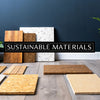Eco Friendly Interior Design Tips in New Zealand

Understanding Eco-Friendly Interior Design Beyond The Buzzwords
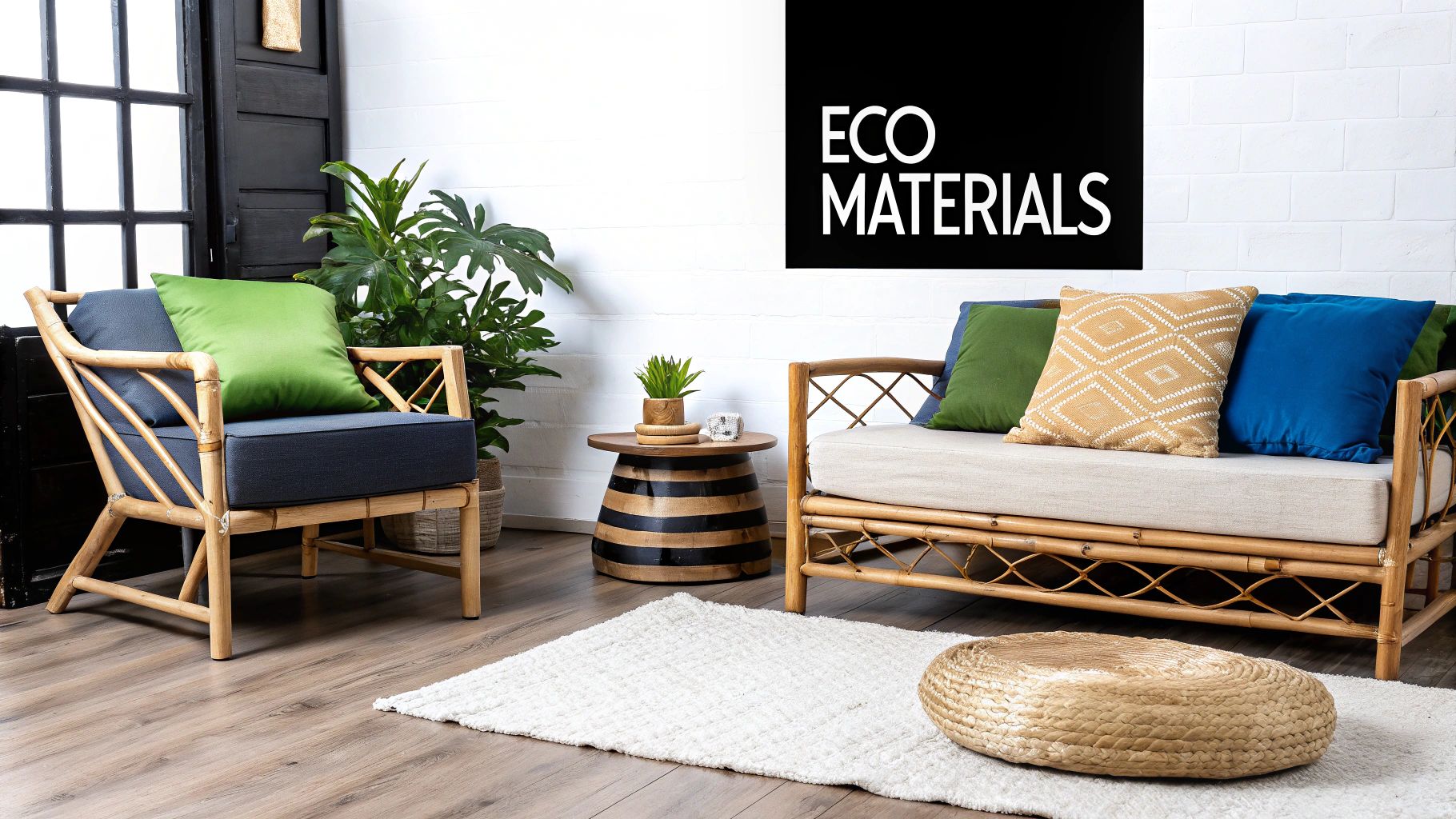
Eco-friendly interior design is more than a passing fad; it's about creating a home that's in harmony with the planet. It's not just about adding a few plants or using bamboo. It's a whole new way of thinking about design, going deeper than surface-level changes to create a truly sustainable space.
Imagine two chairs that look identical. One is crafted from sustainably harvested New Zealand timber, while the other is made from imported wood with a questionable origin. They might look the same, but their impact on the environment is drastically different.
This deeper approach to eco-friendly interior design means considering the entire journey of materials and products – from where they originate and how they're made, to their transportation and what happens when they're no longer useful.
It means asking questions like: Where did this wood come from? How far did it travel to get here? What kind of finish is on it? What will happen to it in ten years? This lifecycle thinking forms the core of sustainable design.
This shift is particularly visible in New Zealand. Here, sustainable design is increasingly important for businesses, becoming a key part of their brand identity. They want their eco-friendly values to be clear and visible. This trend is expected to grow in 2025, as companies strive to showcase their commitment to the environment through their design choices. Sustainable design principles aim to lessen the environmental impact of buildings, which are a major contributor to New Zealand's carbon footprint. Discover more insights about this trend.
Seeing Through Greenwashing
Sadly, not every product labeled "eco-friendly" actually is. Greenwashing, the practice of making misleading environmental claims, is a real problem in the design world. It’s important to learn how to spot truly sustainable practices.
For example, a product might boast recycled content. But if it’s shipped from across the world, its overall environmental impact might be greater than a locally made product using new materials.
Building a Sustainable Foundation
Learning to separate genuine eco-conscious choices from marketing hype allows us to make informed decisions about our designs. Thinking about the long-term impact of our choices, rather than just the immediate look or price, also leads to better outcomes.
This means prioritizing durable, timeless design over short-lived trends. It means understanding the true environmental cost of our choices and demanding transparency about materials and manufacturing. By focusing on these key principles, we can create homes that are beautiful and kind to the planet.
This journey towards eco-friendly interior design requires a change in how we think, but the reward is a healthier home and a healthier planet for future generations.
The Hidden Environmental Cost Of Your Design Choices
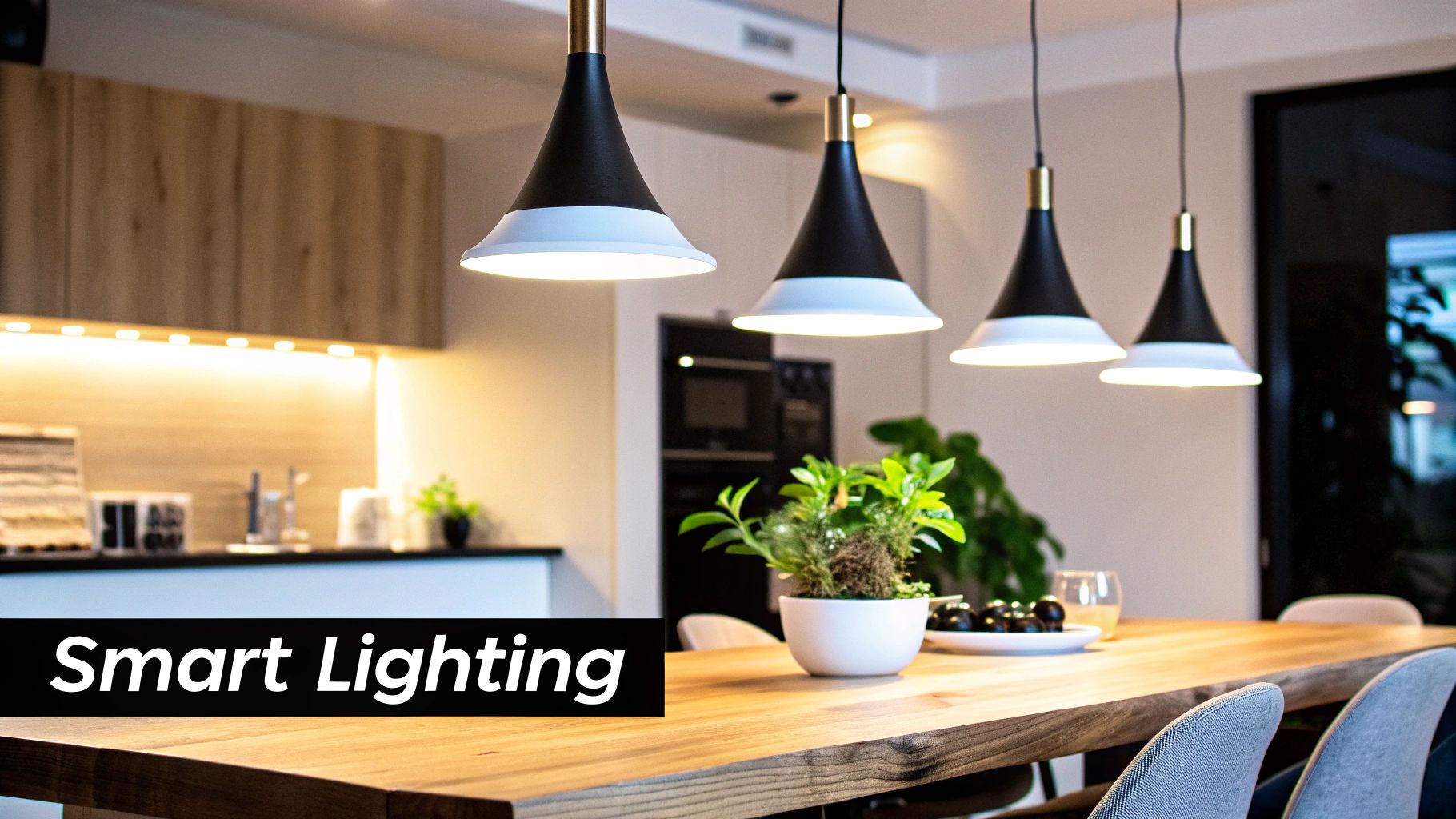
That imported sofa or sleek kitchen countertop? They have a story beyond design. It's a story written in the environment's language, starting with the sourcing of raw materials and ending with the item's disposal. Every design choice, from paint to furnishings, has an environmental impact. We'll explore this often unseen impact, specifically within New Zealand.
Think about a simple wooden dining table. Its journey might start in a far-off forest, encompassing resource extraction, processing, and manufacturing. Next, it's shipped across the ocean, adding to transport emissions. Finally, it reaches your home, where it will eventually be replaced and possibly end up in a landfill.
This journey, repeated for countless design elements, adds up to a substantial collective impact. New Zealand's construction industry plays a key role in reducing the country's carbon footprint. Buildings account for up to 20% of national carbon emissions, making sustainable design and material choices crucial. Initiatives like the Carbon 2025 and Beyond program offer tools and resources to lessen environmental impact. Find more information on sustainable construction in NZ.
Evaluating the True Cost of Design
How can we become more aware of these hidden costs? Lifecycle thinking offers one approach. This involves considering a product's entire lifespan, from its creation to its eventual disposal. Asking ourselves a few key questions helps: Where did the material come from? How was it made? How far did it travel? What happens when it’s no longer useful?
Understanding the environmental consequences of different materials is also essential. Some materials, such as certain timbers, are renewable and can be sourced sustainably. Others, like some plastics, have a much larger environmental footprint due to their manufacturing and slow decomposition.
Making Informed Design Choices
With this understanding, we can make more thoughtful design decisions. We can begin to weigh the actual cost of our choices, balancing aesthetics and function with environmental impact. This could mean opting for local materials, choosing furniture made from recycled or reclaimed resources, or prioritizing quality and durability to extend a product's life.
By acknowledging these hidden costs and adopting sustainable design principles, we can create beautiful living spaces that also respect the environment. It’s a win-win for our homes and for Aotearoa. This move toward eco-friendly interior design isn’t just about individual choices; it’s a shared journey toward a more sustainable future.
Core Principles That Guide Smart Sustainable Design
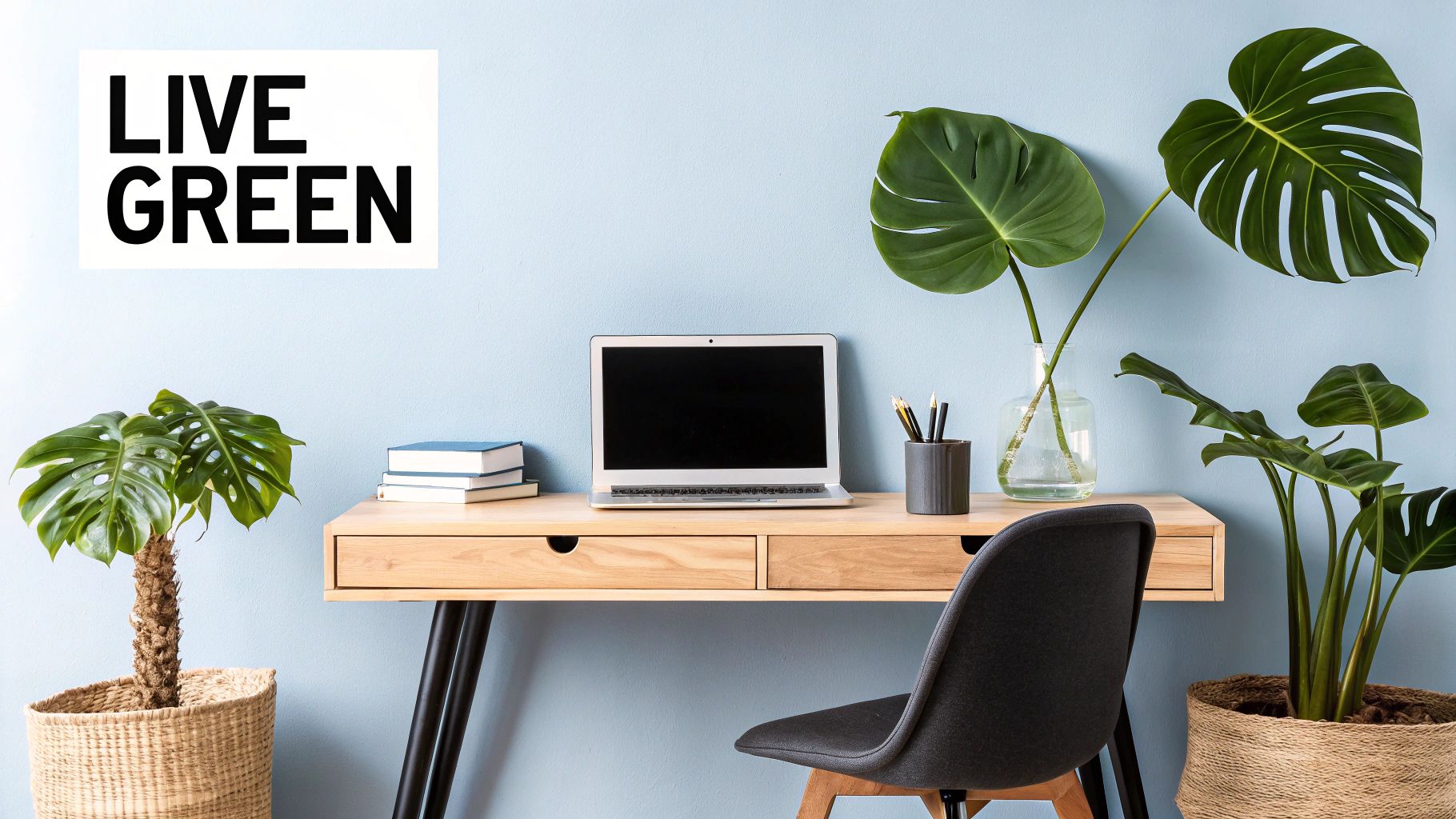
Eco-friendly interior design isn't just a passing fad; it's a way of thinking. It's about carefully considering the impact of your choices on both your living space and the environment. This section delves into the fundamental principles that separate truly sustainable design from superficial greenwashing. These principles intertwine to create spaces that are beautiful and environmentally responsible.
Durability and Timeless Aesthetics
Imagine a cherished family heirloom, like a well-worn armchair passed down through generations. Its lasting quality embodies the essence of sustainable design. Durability minimizes waste and reduces the need for constant replacements. This is particularly relevant in places like New Zealand, where practicality and longevity are highly valued.
Timeless aesthetics play a key role in this long-term view. Choosing classic designs over short-lived trends helps create spaces that remain stylish and relevant for years to come. This lessens the desire to constantly redecorate, reducing both environmental impact and financial burden.
Energy Efficiency and Resource Conservation
Energy efficiency is another cornerstone of sustainable design. Maximizing natural light, using energy-efficient appliances, and opting for sustainable insulation can drastically cut down your home's energy use and lower your power bills.
Resource conservation goes hand in hand with energy efficiency. This involves using water-saving fixtures, selecting materials with recycled content, and minimizing waste during renovations and construction.
Material Transparency and Local Sourcing
Understanding the origin of your materials is crucial for informed decision-making. Material transparency gives you the power to choose products that reflect your values. Seek out certifications that guarantee sustainable sourcing and consider the entire lifecycle of materials, from their extraction to their eventual disposal.
Prioritizing locally sourced materials, such as New Zealand timber or wool, cuts down on transport emissions and supports local businesses. This is especially significant in Aotearoa, with its rich tradition of valuing local craftsmanship and sustainability. For more ideas, take a look at our guide on 7 sustainable interior design ideas for 2025.
Balancing Competing Priorities
Sustainable design often requires balancing various factors. Budget limitations, personal aesthetic preferences, and environmental goals can sometimes seem conflicting. However, clever designers can find creative ways to integrate these considerations, creating spaces that are both beautiful and environmentally sound.
For instance, repurposing existing furniture or finding second-hand pieces can be a budget-friendly approach to reducing waste and adding unique character to a room. Choosing durable, multi-functional furniture also promotes a long-term perspective, reducing the need for frequent replacements.
Let's explore these principles further with a helpful comparison table:
Sustainable Design Principles Comparison
A comparison of traditional vs eco-friendly design approaches across key decision-making areas
| Design Aspect | Traditional Approach | Eco-Friendly Approach | Environmental Benefit |
|---|---|---|---|
| Materials | Often prioritizes cost and aesthetics over sustainability | Emphasizes recycled, renewable, and locally sourced materials | Reduced resource depletion, lower carbon footprint |
| Energy | Relies on conventional energy sources | Maximizes natural light and uses energy-efficient appliances | Lower energy consumption, reduced greenhouse gas emissions |
| Waste | Can generate significant waste during construction and renovation | Minimizes waste through reuse, repurposing, and responsible disposal | Reduced landfill waste, conservation of resources |
| Longevity | May prioritize trends over timelessness, leading to frequent replacements | Focuses on durable, timeless designs | Reduced consumption, less waste |
| Sourcing | May rely on globally sourced materials | Prioritizes local sourcing | Reduced transportation emissions, supports local economies |
This table highlights the key differences between traditional and eco-friendly design, demonstrating how sustainable choices positively impact the environment.
By thinking creatively and adopting a holistic approach, eco-friendly interior design becomes a powerful tool for creating homes that reflect both your lifestyle and your values. This mindful approach benefits both your wallet and the planet over time.
Choosing Eco Materials That Actually Perform Well
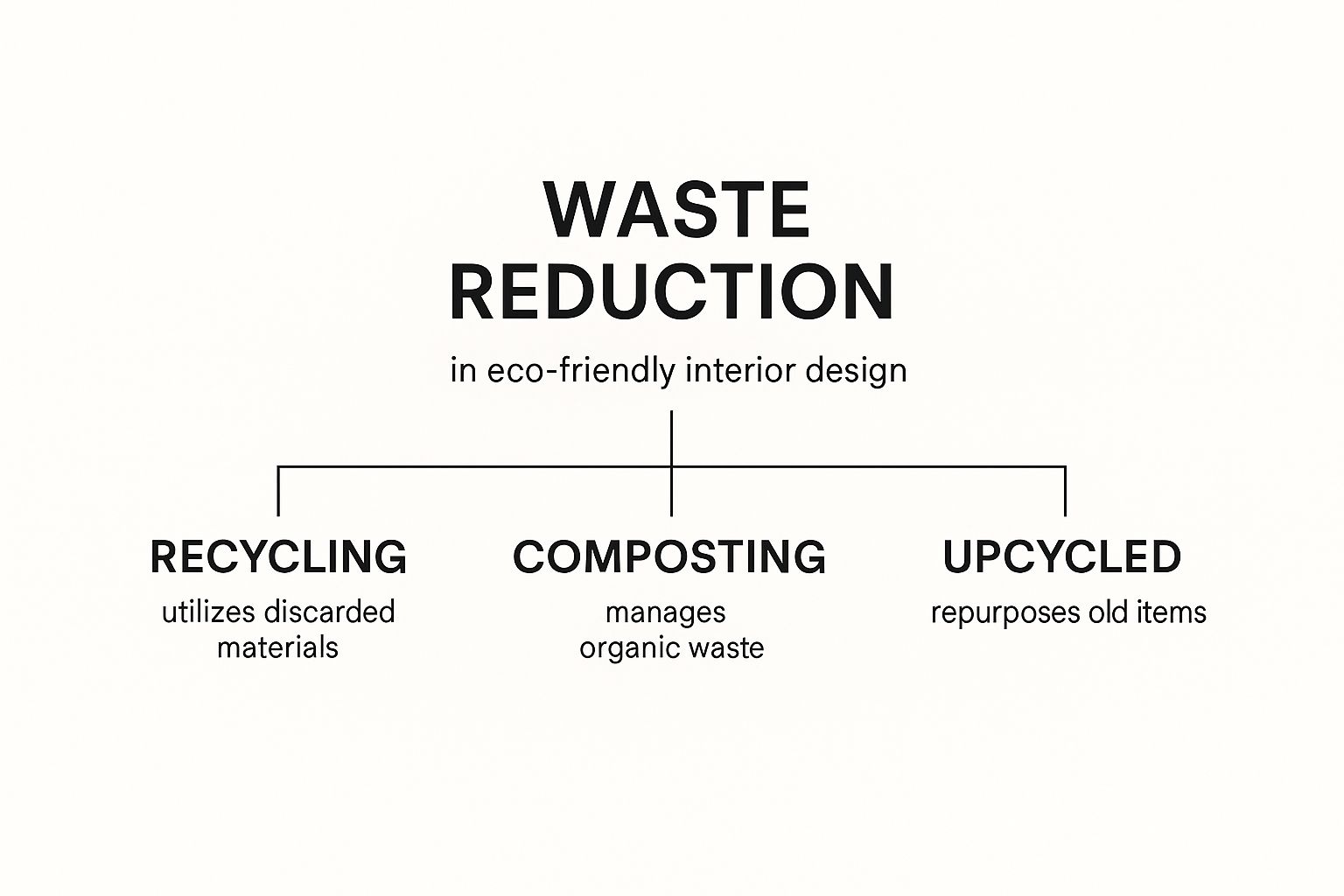
The infographic above shows how recycling, composting, and upcycling work together in eco-friendly interior design. Think of it like a triangle: each side supports the others to keep waste out of landfills. This circular approach means we can lessen our environmental impact while creating beautiful, functional spaces.
Creating a sustainable interior doesn't have to be a headache. It’s about making informed choices, and avoiding those costly design blunders. This guide explores eco-friendly materials easily found in New Zealand, from local timber to recycled treasures and game-changing new materials.
Locally Sourced Timber and Recycled Materials
New Zealand is blessed with an abundance of sustainable timber. Using timber from sustainably managed forests ensures these resources are available for future generations. It also boosts local economies and reduces the carbon footprint of transporting materials. Think of it as a win-win-win. Macrocarpa and pine, for instance, are readily available and incredibly durable for various applications.
Recycled materials are gaining traction in eco-conscious design. From recycled glass countertops and tiles to furniture crafted from reclaimed wood, these materials offer both environmental and aesthetic benefits. Repurposing existing materials minimizes waste and gives your space a unique story.
Exploring Innovative Materials
Beyond the familiar, innovative materials are pushing the boundaries of sustainable design. Bamboo, known for its rapid growth and strength, is a versatile option for flooring, furniture, and even wall coverings. You might also be surprised by the sustainability of natural fabrics like linen. Even recycled plastic is being transformed into stylish, durable products. Imagine outdoor furniture made from recycled plastic bottles – it's diverting waste from landfills while offering weather-resistant seating.
Navigating Material Certifications
Material certifications are your compass in the world of sustainable design, helping you separate truly green options from greenwashing. Look for the Forest Stewardship Council (FSC) certification for timber, which guarantees responsible forestry. For other materials, certifications like Global GreenTag and Declare provide a clear picture of ingredients and environmental impact. And guess what? Navigating these certifications is getting easier. For example, eCert, launched in November 2024, lets you compare the sustainability certifications of building products, making it simpler to choose eco-friendly materials. It supports certifications from various suppliers and integrates with platforms like Masterspec. Discover more insights on eCert and sustainable building materials.
Balancing Sustainability with Practicality
While eco-friendliness is key, eco-friendly interior design also needs to be practical. Durable materials mean fewer replacements, saving resources and reducing waste. Think about maintenance too – some sustainable options might need special care. Finally, balance your budget with your green goals. Sustainable choices can lead to long-term savings through lower energy bills and fewer replacements.
To help you make informed decisions, we’ve compiled a handy comparison of some popular eco-friendly materials:
Eco Friendly Material Options Guide: Comprehensive comparison of sustainable interior materials including durability, cost, and environmental impact ratings.
| Material Type | Sustainability Rating | Durability | Cost Range | Best Applications |
|---|---|---|---|---|
| Reclaimed Wood | High | High (varies by wood type) | Moderate - High | Flooring, furniture, wall cladding |
| Bamboo | High | High | Moderate | Flooring, furniture, wall coverings |
| Recycled Glass | High | High | Moderate - High | Countertops, tiles, backsplashes |
| Recycled Plastic | Moderate - High | High | Moderate | Outdoor furniture, decking, tiles |
| FSC Certified Timber | Moderate - High | High (varies by wood type) | Moderate - High | Flooring, furniture, structural elements |
This table highlights the diverse properties of sustainable materials, emphasizing that durability and cost can vary significantly. Choosing the right material depends on the specific application and desired aesthetic.
By understanding sustainable materials, navigating certifications, and considering practical factors like durability and maintenance, you can create an eco-friendly interior that not only performs well but also aligns with your values.
Real New Zealand Homes Making Sustainability Beautiful
Seeing eco-friendly interior design come to life in real homes is incredibly inspiring. This section showcases New Zealand homes where families live comfortably and stylishly while minimizing their impact on the environment. These aren't just for show; they're real living spaces, proving sustainability doesn't mean sacrificing comfort, style, or practicality.
From Wellington to Auckland: Inspiring Examples
Imagine a Wellington apartment filled with natural light, highlighting the beauty of locally sourced timber. Picture an Auckland family home seamlessly blending recycled materials with a modern look. These are just a couple of examples of how Kiwis are embracing eco-friendly interior design to create beautiful, livable spaces. These homes show that sustainability isn't a compromise; it actually makes a home better.
Overcoming Challenges, Discovering Creative Solutions
These homeowners faced real challenges, just like anyone renovating or building. Finding reliable, local suppliers of eco-friendly materials can be tough. Balancing budget with environmental goals takes careful planning. But these challenges led to some creative solutions.
Some homeowners discovered the beauty of repurposing existing furniture, giving old pieces new life and reducing waste. Others prioritized local materials, minimizing transportation emissions and supporting New Zealand businesses. Projects like New Zealand’s first residential Passive House showcase innovative use of materials like structural insulated panels (SIPs) and recycled timber, emphasizing energy efficiency and low environmental impact. Initiatives like EcoSmart's recycled plastic furniture also demonstrate how waste can be turned into durable products, contributing to a circular economy. Discover more insights about sustainable design innovation in New Zealand.
Unexpected Benefits and Practical Takeaways
The homeowners also found unexpected benefits. Natural materials and finishes improved indoor air quality, creating healthier living environments. Energy-efficient design and durable materials led to long-term cost savings. These aren’t just abstract benefits; they're tangible improvements to everyday life.
These real-world examples offer valuable lessons for anyone interested in eco-friendly interior design. They show practical ways to implement sustainable principles, no matter your budget or home size. From choosing eco-friendly upholstery to maximizing natural light, there are actionable takeaways for every home.
Applying Inspiration to Your Own Space
These New Zealand homes provide a lot of inspiration. They prove that sustainable design can be beautiful, functional, and truly enriching. Whether you’re planning a major renovation or just looking to make small changes, these stories offer valuable insights and practical tips. They encourage us all to think about how we can make our own homes more sustainable, creating spaces that are both beautiful and good for the planet.
Your Practical Action Plan For Sustainable Design Success
Ready to bring eco-friendly design into your home, but feeling a little lost on where to start? This guide breaks it down into simple steps, acknowledging real-world budgets, busy schedules, and the compromises we all make in everyday life. Whether you're redoing a single room or planning a whole-home makeover, you'll find a clear path forward.
Conducting a Sustainability Audit
Think of this first step as a "health check" for your home, but with sustainability in mind. Walk through your space and consider what areas could use some eco-friendly love. Are there any obvious energy wasters, like drafty windows or old appliances? Which materials are starting to show their age and could be replaced with greener options? This audit helps you focus your time and money where it matters most.
Prioritizing High-Impact Projects
Sustainable design is a marathon, not a sprint. You don't have to do everything at once. Start by tackling projects that will have the biggest positive impact. Upgrading your insulation, for instance, can significantly reduce energy use and save you money in the long run. Switching to low-VOC paints can instantly improve your indoor air quality. Even something as simple as swapping out incandescent bulbs for LEDs is a quick win for energy efficiency. These early victories will build momentum and show you the tangible benefits of your efforts.
Finding Sustainable Suppliers and Professionals
Finding the right materials and professionals who truly understand eco-friendly design can sometimes feel like searching for a needle in a haystack. Look for suppliers who specialize in locally sourced timber, recycled materials, and certified products. Don't be afraid to ask questions about where materials come from and how they're made. When you're choosing designers or contractors, find out about their experience with sustainable design principles. Do they prioritize energy efficiency, waste reduction, and using durable materials? Doing your research and evaluating their expertise is essential for successful eco-friendly interior design. For guidance on sustainable practices and innovations specifically in New Zealand, check out resources like Sustainable Living.
This screenshot from the Sustainable Living website showcases the variety of resources available to New Zealanders looking to make sustainable choices, highlighting how important it is to consider all aspects of life, from food and energy to building and design.
Realistic Timelines and Budget Planning
Set realistic timelines that work with your budget and lifestyle. Big projects can feel less overwhelming when broken down into smaller, manageable phases. Create a budget that prioritizes those high-impact changes but leaves room for flexibility. And remember, sustainable design doesn't have to break the bank. Repurposing existing furniture, finding second-hand pieces, and taking on some DIY projects can save you money and reduce waste. For inspiration, check out Maak Home's commitment to sustainability and consider how their made-to-order products can contribute to a more environmentally conscious home.
Troubleshooting Common Challenges
Even the best-laid plans can encounter hiccups. Material availability, especially for locally sourced items, can sometimes be tricky. Budget constraints might call for some creative solutions and compromises. Unexpected delays can throw off your timeline. The key is to stay flexible, anticipate potential problems, and research alternative options beforehand. Don't hesitate to ask for advice from experienced professionals or connect with local sustainability communities for support. By planning ahead and staying adaptable, you can ensure your eco-friendly interior design project stays on track and creates a home you'll love for years to come.
Building Your Sustainable Design Future
Your journey towards an eco-friendly interior isn't just about a new look; it's about creating a healthier home and a healthier Aotearoa. It's about making choices that benefit both your living space and the planet. Think of it as a ripple effect, starting in your home and spreading outwards. This section explores how to keep that momentum going, connect with like-minded people, and continue learning as you build your sustainable design future.
Connecting With New Zealand's Sustainable Design Community
Imagine being part of a network of Kiwis, all passionate about sustainable living. New Zealand has a vibrant community dedicated to eco-conscious design, from local artisans and suppliers to online forums and groups of homeowners. Connecting with these groups gives you access to valuable resources, inspiration, and a supportive network.
-
Local Supplier Networks: Many New Zealand businesses specialize in sustainable materials and practices. Connecting directly with these suppliers allows you to discover unique, locally-sourced products, all while supporting the local economy. Imagine the satisfaction of knowing the beautiful timber flooring in your living room came from a sustainably managed forest just a few kilometers away.
-
Homeowner Groups: Sharing experiences, both the triumphs and the challenges, is invaluable. Online forums and local meetups are great platforms to connect with other homeowners on similar journeys. These groups can offer advice on everything from sourcing reliable tradespeople to making informed decisions about materials.
-
Design Professionals: Working with architects and designers specializing in sustainable design can truly elevate your project. They bring specialized knowledge in energy efficiency, material selection, and innovative design solutions, ensuring your home is both aesthetically pleasing and environmentally responsible.
Staying Informed and Inspired
The world of eco-friendly interior design is constantly changing. New materials, technologies, and design approaches are emerging all the time. Staying informed helps you make the most sustainable choices for your current and future projects.
-
Online Resources: Websites, blogs, and online publications dedicated to sustainable living offer a wealth of information at your fingertips. They provide insights into emerging trends, innovative products, and practical tips for creating an eco-conscious home.
-
Workshops and Events: Attending workshops or design events focused on sustainability can provide deeper learning and valuable networking opportunities. These events often offer hands-on experiences with new materials and techniques, along with the chance to connect with experts and fellow enthusiasts.
-
Following Influencers: Social media platforms like Instagram and Pinterest are great sources of inspiration. By following designers and bloggers who focus on sustainable interiors, you can discover new ideas and stay motivated on your own design journey.
Measuring and Celebrating Your Impact
As you continue on your path toward a sustainable design future, it’s important to track your progress and celebrate your achievements. Quantifying your environmental impact, even in small ways, can be incredibly motivating.
-
Tracking Energy Consumption: Monitoring your energy and water usage provides concrete evidence of the positive changes you’re making. Lower utility bills become a tangible reminder of your impact.
-
Calculating Carbon Footprint: Various tools and resources are available to help you estimate the carbon footprint of your design choices. This allows you to measure the effectiveness of your sustainable strategies and identify areas where you can make further improvements.
-
Sharing Your Story: Inspiring others is a powerful way to extend the positive impact of your sustainable design choices. Sharing your experiences, the hurdles you’ve overcome, and your successes can encourage friends, family, and your community to consider their own environmental footprint.
Your journey toward eco-friendly interior design is a continuous process of learning, adapting, and making conscious choices. By connecting with others, staying informed, and acknowledging your progress, you can create a home that reflects both your personal style and your commitment to a sustainable future.
Ready to transform your space into a beautiful, eco-conscious haven? Explore the stunning range of sustainable textiles and wallcoverings at Maak Home and start creating your dream interior today.





